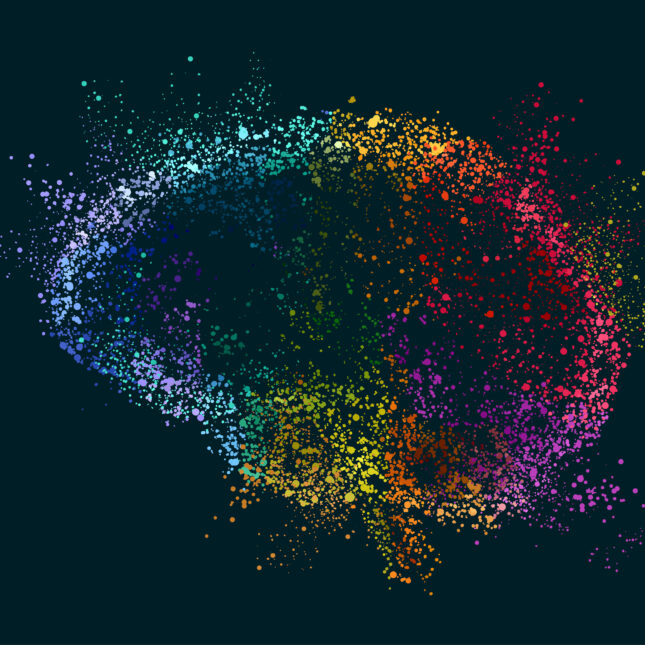Psilocybin and muscimol are both found in mushrooms, but their chemistry, effects, safety, and therapeutic potential are worlds apart. Psilocybin supports insight and healing in safe, guided settings, while muscimol is dissociative, sedative, and unpredictable.
Collectively, we’ve spent over a decade guiding others through profound psilocybin experiences. We’ve seen the life-changing potential these compounds hold, but we’ve also seen how misinformation and casual use can do more harm than good.
These are not interchangeable tools. One is a guide toward presence and healing. The other, while intriguing, may lead you away from both. If you’re seeking true transformation, the path you choose matters.
Let’s explore why.
Psilocybin and Muscimol Compared
Before stepping into any experience with sacred fungi, it’s vital to understand what you’re working with. While both psilocybin and muscimol occur naturally in mushrooms, their chemistry, effects, and healing potential are worlds apart. This chart offers a grounded starting point for discernment:
| Feature | Psilocybin Mushrooms | Muscimol (Amanita muscaria) |
| Main Compound | Psilocybin (converted in the body to psilocin) | Muscimol (plus ibotenic acid, which must be converted) |
| Acts On | 5-HT2A serotonin receptors (modulates perception, mood) | GABA-A receptors (slows down the nervous system) |
| Legal Status (U.S.) | Federally illegal; some decriminalized municipalities | Federally legal in most states |
| Typical Effects | Visual shifts, ego dissolution, emotional breakthroughs | Sedation, disconnection, dream-like or drunken states |
| Risk Level | Low when held in safe, intentional settings | Moderate to high if improperly prepared or misused |
| Healing Evidence | Backed by rigorous clinical research | Sparse human data; mostly traditional or anecdotal |
What Is Psilocybin? How It Works and Why It Heals
Psilocybin is the naturally occurring compound found in over 200 species of mushrooms. Once ingested, your body converts psilocybin into psilocin—a compound that binds to serotonin 5-HT2A receptors in the brain.
This isn’t just a chemical reaction—it’s a gentle interruption of our default mental patterns. Here’s what many people experience:
- A softened sense of ego or “self”
- Heightened emotional awareness and introspection
- Visual and sensory distortions that feel symbolic or deeply meaningful
A sense of unity with nature, others, or something greater than the self
This is not about escapism. It’s about returning to yourself with new eyes.
Scientifically Backed Healing
What makes psilocybin so powerful isn’t just the experience—it’s what comes after. Modern research is finally catching up to what many ancient traditions have known for centuries.
Studies now show psilocybin has therapeutic potential for:
- Depression
- Post-Traumatic Stress Disorder (PTSD)
- Addiction and substance misuse
- End-of-life anxiety
How it works:
- Neuroplasticity: Psilocybin and other psychedelic compounds promote new connections between neurons, helping the brain “rewire” old patterns.
- Default Mode Network Disruption: Temporarily quieting this part of the brain allows for fresh perspectives and emotional breakthroughs.
- Emotional Processing: Many guests at our retreats describe moments of profound release—grief, love, forgiveness—that become pivotal to healing.
What Is Muscimol? The Truth About the Other “Magic Mushroom”
Photo Source -> UC San Diego Today – University of California San Diego
Unlike psilocybin, muscimol doesn’t engage the serotonin system—it binds to GABA-A receptors, slowing brain activity and producing a very different kind of experience. This compound is found in Amanita muscaria, the iconic red-and-white mushroom you’ve likely seen in folklore. Amanita muscaria has also been used historically in shamanic and religious rituals, particularly in Siberian and northern Eurasian traditions.
What does this mean in practice?
- Muscimol depresses brain activity, rather than stimulating it.
It can induce a trance-like state, sometimes accompanied by body heaviness or sleep. - At certain doses, people report dissociation, dream-like visions, or full loss of motor coordination.
- Emotional processing is often limited; the experience tends to be sedative, not revealing.
The key difference.
Muscimol is both psychoactive and dissociative, but unlike psilocybin containing mushrooms, it is not a psychedelic. It doesn’t open perception—it detaches you from it. That distinction matters deeply when your goal is healing rather than escape.
The Risky Side of Amanita Muscaria
Though legal in most regions, Amanita muscaria carries significant safety concerns—especially when prepared or dosed improperly.
- It contains ibotenic acid, a potent neurotoxin that can cause nausea, confusion, agitation, and even convulsions if consumed raw or under-processed.
- Through drying or boiling, ibotenic acid is converted into muscimol, which is more potent and less toxic—but this process must be done carefully.
- Effects can vary wildly depending on:
- The region where the mushroom was harvested
- The ratio of ibotenic acid to muscimol
- The user’s weight, metabolism, and neurochemistry
Symptoms of misuse may include:
- Gastrointestinal distress
- Disorientation or delirium
- Temporary psychotic episodes
- Loss of consciousness or memory
We prioritize intentional, supportive, and integrative spaces. We feel strongly that muscimol should never be approached casually or without a deep understanding of its pharmacology and preparation. The unpredictability alone makes it unsuitable for most healing-centered containers.
That said, like all plant and fungal medicines, it deserves respectful exploration—not exaggeration or fear. But that exploration must come with humility, safety, and full informed consent.
How Do the Experiences Feel Different?
Psilocybin: Insight, Emotion, Expansion

Psilocybin often invites people into the depths of their own consciousness—with gentleness or intensity, depending on what’s ready to surface.
It’s commonly described as:
- Emotionally cathartic
- Spiritually meaningful
- Visually vivid and symbol-rich
- A dissolving of the ego or “self”
- A powerful sense of connection—to nature, others, or one’s true self
Our guests often say, “It gave me exactly what I needed, even if it wasn’t what I was looking for.”
This experience isn’t always easy—but it is purposeful. It opens a doorway for healing, not just altered perception.
Muscimol: Sedation, Dreaming, Confusion
Muscimol feels very different.
- It can feel trance-like, almost as if the body is asleep but the mind is adrift.
- Some describe it as drunken or floating, with little clarity or recall.
- Vivid dreams may occur, especially when taken close to sleep.
- Others report total blackouts or stretches of time with no memory.
Some individuals seek out muscimol for anxiety or insomnia, but its effects can be unpredictable. One dose may bring vivid, immersive dreams. Another may simply bring exhaustion without rest. And from one batch to the next, the experience can shift dramatically.
Muscimol isn’t a guide—it’s more like a sedative veil. It doesn’t ask questions or offer insight. For some, that’s appealing. For those seeking transformation, it may fall short.
How to Tell the Difference Between Psilocybin and Amanita Mushrooms
While psilocybin-containing mushrooms and Amanita muscaria have distinct features, accurate identification is harder than most people think.
- Psilocybin mushrooms tend to be brown or tan with gills and may bruise blue.
- Amanita muscaria is bright red or yellow with white spots and a thick stem—the classic “fairy tale” mushroom—but its enchanting appearance doesn’t make it safe.
They also differ in scent and taste:
- Amanita has a sharp, sour odor and an acrid flavor.
- Psilocybin tends to smell earthy and taste woody or nutty.
Is it hard to tell them apart?
Yes—especially for those without formal training in mycology. Mistaking one for the other, or misidentifying a toxic species altogether, can lead to serious harm.
This is not an area for guesswork. No one should forage or consume wild mushrooms without extensive knowledge, experience, and absolute certainty. When it comes to fungi, curiosity must be matched with caution.
As we say in the mycological world “Never munch on a hunch”.
Can You Combine Psilocybin and Muscimol?
This question comes up more often than you might think—and we always respond with care and clarity: no clinical research currently supports combining these two compounds.
When people ask about combining them for a “layered” experience, my immediate concern is safety—physically, neurologically, and emotionally.
Here’s why we advise against it:
- The interaction between stimulation and sedation can be confusing to the nervous system.
- You may experience emotional numbness, physical disorientation, or cognitive fragmentation—none of which support healing.
- You risk overriding the therapeutic potential of both compounds, leaving the experience muddled rather than meaningful.
In this work, more isn’t always more. The most powerful journeys are often the most simple.
Which Mushroom Holds More Promise?
If you’re standing at a crossroads between psilocybin and muscimol, the answer isn’t found in trend or legality—it’s found in your why.
Psilocybin is supported by clinical research, ancient traditions, and a growing body of evidence that points to its capacity to facilitate real, emotional, and spiritual healing. When approached with care, it can be a profound ally in transformation.
Muscimol, on the other hand, has roots in ritual and folklore. It is legal and accessible, but its effects are inconsistent, its research limited, and its application in healing contexts still unclear. It may offer novelty, but it lacks the relational clarity and therapeutic reliability of psilocybin.
Whether you’re a scientific skeptic or a curious healer, the right path depends on your intention, support system, and goals.
Our goal is to walk beside those who are ready to heal—not just explore. Our retreats are not about escaping reality—they’re about returning to it more whole. With structure, integration, and sacred space, we help you navigate the journey safely and meaningfully.
If you’re ready to step into that work, we’re here to welcome you—with open hearts and open hands.


